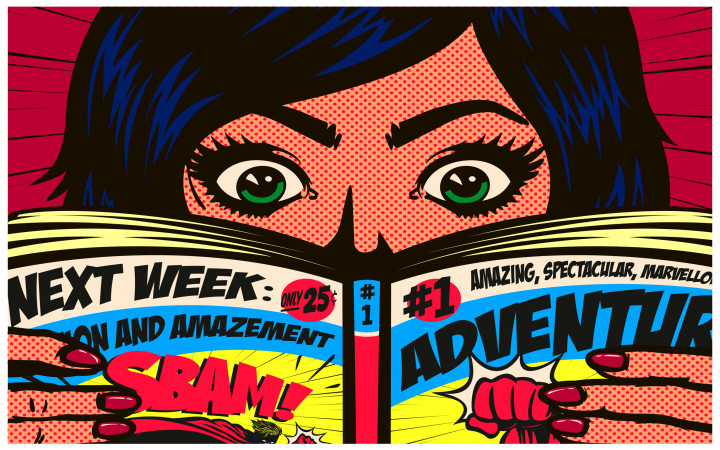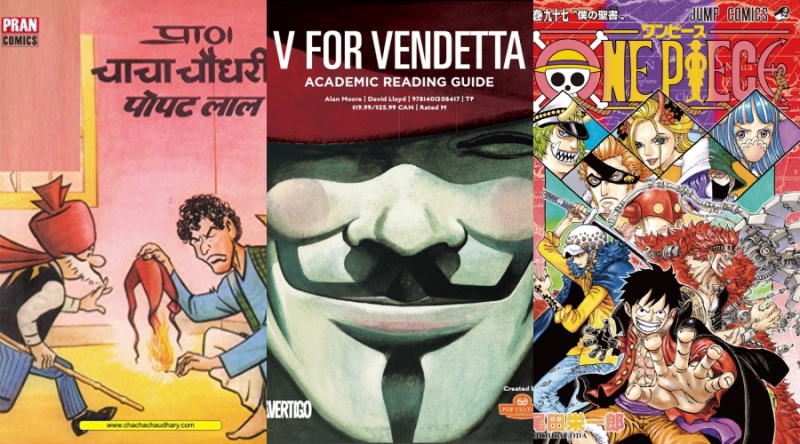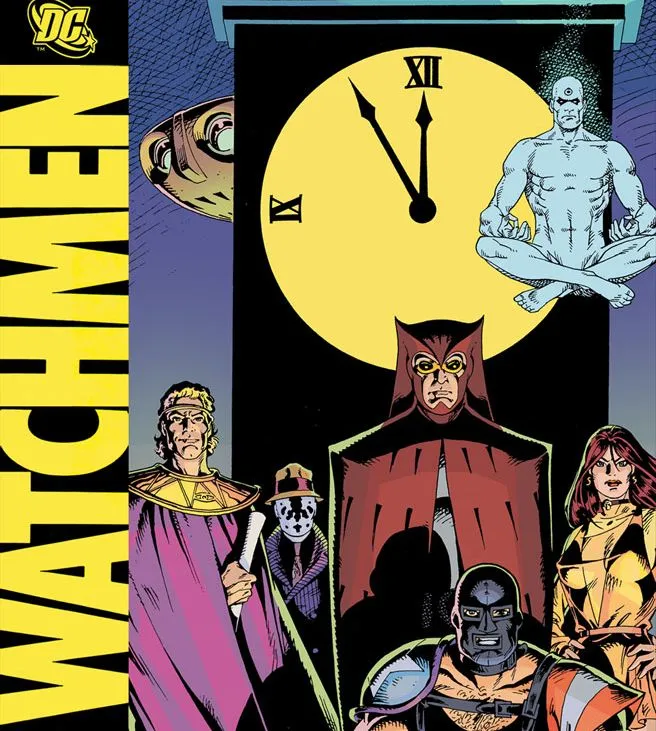
All About Graphic Novels Localization
Graphic novels possess a unique potency that surpasses geographical, cultural, and linguistic barriers, captivating audiences through their vibrant narratives and visual expressions. With their growing global acclaim, the significance of localizing this one escalates, ensuring they resonate and remain accessible to diverse readerships.
The process of localizing this kind of art extends beyond mere translation. Why so? It’s a complex endeavor that seeks to preserve the essence and cultural subtleties, while tailoring the content. Unlike conventional novels, the graphic aspect merges visual components with textual storytelling, introducing distinctive challenges and prospects for translators. Continue reading to discover more about this topic!
All About Graphic Novels Localization
The history of graphic novels is a complex blend of influences, innovations, and changing perceptions of sequential art storytelling. Although the modern idea of graphic novels emerged in the latter part of the 20th century, the roots of this medium extend far back in time.
Early instances of sequential art can be seen in ancient civilizations, where visual stories adorned cave walls, Egyptian hieroglyphs, and medieval tapestries. However, the precursor to today’s graphic novels lies in the 19th-century popularity of comic strips and serialized tales found in newspapers and magazines, such as Rodolphe Töpffer's “The Adventures of Obadiah Oldbuck” in the 1830s.
The Golden Age of Comics in the 1930s and 1940s, characterized by the emergence of superheroes like Superman and Batman, set the stage for the comic book industry. These serialized stories, mainly catering to young readers, flourished until the middle of the 20th century. Notably, Will Eisner’s “A Contract with God” in 1978 is credited as one of the pioneering works that brought the term “graphic novels” into widespread use.
The 1980s marked a significant shift in how comic books were perceived, with creators delving into more mature themes and intricate storytelling. Art Spiegelman’s Pulitzer Prize-winning “Maus,” a poignant narrative of the Holocaust using anthropomorphic animals, elevated the graphic novel’s standing as a legitimate literary form. This period saw a diversification of genres, embracing autobiographical tales, historical narratives, and social commentary.
Following this, graphic novels gained increasing acceptance in mainstream culture. Works like Alan Moore and Dave Gibbons’ “Watchmen” and Frank Miller’s “The Dark Knight Returns” challenged traditional superhero portrayals, exploring darker and morally ambiguous themes.
The 21st century brought further acknowledgment of this kind of art as a respected literary form, receiving critical acclaim and commercial success. During this time, it expanded its reach, addressing a wide range of subjects including social issues, memoirs, non-fiction, and experimental storytelling.
Today, it continues to evolve, with diverse voices and artistic styles contributing to its ever-expanding narrative. From traditional printed formats to digital platforms, this one remains a vibrant and influential medium, consistently pushing the boundaries of storytelling and artistic expression.
Graphic Novels vs Comic, What’s the Difference?

These two might be overlapping each other. However, basically, graphic novels and comics differ mainly in their length, how the story is structured, and how they’re published. Comic books are shorter, part of a series, and typically about 20-30 pages long. They’re released regularly and focus on serialized storytelling, often revolving around superheroes or shorter storylines. They were also published as individual issues and later combined into volumes.
Graphic novels, in contrast, are longer and self-contained. They can range from a couple hundred pages to extensive narratives, encompassing a complete story arc within one book. They’re published as standalone volumes with higher-quality materials and are intended to be read as a single work. In terms of storytelling, comic books often have a more episodic style due to their serialization, while graphic novels offer more intricate plots, character development, and thematic depth. It covers a wide range of genres and themes, expanding beyond superheroes to include memoirs, historical fiction, fantasy, and science fiction.
Traditionally, comic books were seen as appealing mainly to younger audiences, especially those featuring superheroes. However, over time, it has explored mature themes and diverse genres, altering this perception. Meanwhile, graphic novels have gained recognition as serious literature for readers of all ages. They’re frequently used in education and literary studies due to their depth and storytelling quality. Besides, comics and manga might overlap each other. However, there are still some aspects to distinguish these two. Manga refers to Japanese comics. Unlike comics, manga is read from right to left. English translations typically retain the original artwork, only altering the text. Manga’s distinctive art style sets it apart from American comics.
These comics are released in volumes similar in size to standard paperback novels. A single manga series might span numerous volumes to unfold its entire narrative. Often, several volumes of a series are already published in Japan before being translated and released in America.
Meanwhile, both comics and graphic novels have the same term in a making process, such as ideographic character (a symbol that represents emotion, like stars for pain), onomatopoeia (interjections to express sound in a word, like meow), panel or frame, and speech bubble.
Nonetheless, graphic novels have a unique thing than similar artwork, such as comics and manga, that is color psychology. For instance, vivid shades have the power to draw attention and evoke positive emotions, while deeper shades can establish stark contrasts and highlight a sense of seriousness. Colors play a pivotal role in shaping the credibility, authority, and persuasive impact of the visuals, influencing how likely your audience is to act or make decisions.
All in all, while both use sequential art to narrate stories, their differences revolve around length, structure, publication format, narrative complexity, and target audience.
Read also All About Visual Novels Localization
The Top 5 Graphic Novels All the Time
Choosing the top five graphic novels depends on personal tastes and the vast array of stories and genres within this medium. Nonetheless, here are the recommendations that have received critical acclaim and left a lasting impact.
Maus by Art Spiegelman. This is an innovative graphic novel that uses animal representations—Jews depicted as mice and Nazis as cats—to recount the Holocaust. Beyond portraying his father’s Holocaust experiences, Spiegelman skillfully explores their intricate father-son dynamic and the difficulties of comprehending and recording such traumatic historical events. As a result, Maus deserves a Pulitzer Prize-winning, a prestigious award.

Watchmen by Alan Moore and Dave Gibbons. Written by two writers, it’s revered for various reasons. Its standout feature lies in dismantling the superhero genre. It disrupts conventional superhero norms by portraying characters as flawed, morally intricate individuals wrestling with ethical quandaries and internal battles. This tale unfolds in a realistic, gritty universe where superheroes encounter public scrutiny, inner conflicts, and the intricate nuances of being human. Moreover, its narrative structure and sophisticated storytelling methods, such as symbol usage and non-linear storytelling, elevate “Watchmen” to a pioneering and contemplative graphic novel.
Persepolis by Marjane Satrapi. It stands as a gripping memoir in graphic form, offering a distinctive view of Iran’s history and cultural tapestry. Its allure lies in depicting Satrapi’s personal evolution amidst the Islamic Revolution’s noise backdrop. Through her lens, the book grants a close-up on her growth, thoughts, and trials while navigating Iran’s evolving political landscape. The stark, monochromatic illustrations deepen the tale, vividly capturing Satrapi’s emotional journey as she grapples with identity, familial ties, and the socio-political milieu. This blend of personal narrative and historical context renders “Persepolis” a riveting and insightful narrative.

Sandman by Neil Gaiman. It’s a gripping comic series that transformed the world of graphic novels. Its most captivating aspect is the expansive mythology and imaginative world it introduces. Gaiman crafts a sophisticated tale around Dream, one of the Endless, embodying dreams and narratives. Through Dream’s encounters with diverse characters and supernatural entities, he delves into themes of mythology, literature, and the essence of being human. Each storyline explores different realms, time periods, and genres, demonstrating his storytelling versatility. His adeptness at merging mythology, fantasy, horror, and philosophy creates a seamless and mesmerizing narrative.

Blankets by Craig Thompson. It’s known as a potent graphic novel, celebrated for its heartfelt storytelling and evocative artwork. Its compelling aspect lies in its exploration of love, faith, family, and self-discovery. Thompson skillfully portrays his own upbringing in a strict religious environment and his initial romantic experience, intricately weaving in themes of religion and the complexities of personal beliefs. The intricately detailed illustrations evoke powerful emotions and adeptly capture the subtleties of human connections, immersing readers in a profoundly emotional journey. Furthermore, the novel’s examination of memory and nostalgia adds depth, creating a deeply moving and relatable narrative that resonates with a wide audience.
Read also 10 Successful Novel Localization All the Time
The Challenges of Graphic Novels Localization
The primary challenge lies in preserving the original artistic intent, while accommodating linguistic and cultural disparities. A meticulous approach is required to convey not just the dialogue, but also the subtle nuances embedded in the artwork, from visual cues to cultural references. This demands a harmonious collaboration between translators, artists, and cultural experts.
Translators play a pivotal role in this process, striving to capture the essence of the story, while navigating linguistic differences. Beyond literal translation, they must consider the cultural context, idiomatic expressions, and even onomatopoeic words that might not have direct equivalents in the target language. Balancing fidelity to the source material with readability in the target language is an art in itself.
Moreover, graphic novels localization extends beyond language. It involves adapting imagery, symbols, and references that might not resonate with the new audience. For instance, an object considered iconic in one culture might carry different connotations elsewhere, necessitating alterations without compromising the narrative’s integrity.
Cultural sensitivity is paramount in this intricate process. What might be acceptable or humorous in one culture could be misunderstood or even offensive in another. Therefore, localization experts need an acute awareness of cultural nuances to make informed decisions and avoid unintentional misinterpretations. Collaboration between artists and translators is essential to ensure a seamless fusion of text and visuals. Artists might need to modify or recreate certain panels to accommodate translated text without obscuring the artwork or altering its meaning. This harmonization between text and visuals maintains the aesthetic and narrative integrity of the original work.
Despite the challenges, graphic novel localization presents a unique opportunity to bridge cultural gaps and introduce readers to diverse narratives from around the world. Through thoughtful process, stories that were once confined to a specific culture or language can now transcend boundaries, fostering a global appreciation for the artistry and storytelling. To conclude, the art of graphic novels localization goes beyond linguistic translation. It’s a meticulous process that respects the integrity of the original work, while adapting it for new audiences. It involves a delicate balance of linguistic expertise, cultural sensitivity, and artistic collaboration. Ultimately, the successful one ensures that the essence of the story remains intact, allowing it to captivate and inspire readers worldwide.
Things to be Noted for Localization Process
Identifying challenges in localizing graphic novels can help a translator find the most appropriate way to overcome them. However, there are several special notes since it’s beyond the scope of translating a text. What are they?
Visual Integration. Ensuring seamless integration of translated text within the original artwork without disrupting the visual narrative flow is a must as balancing text placement with illustrations is crucial for readability.
Artistic Style and Aesthetics. Adapting to different art styles and preferences of the target audience, while maintaining consistency with the original design turns out the ideal one of localization output. Meanwhile, alterations may be needed to appeal to a new cultural aesthetic.
Character Identities and Names. Consistency in character traits, names, and identities is crucial. Adapting these aspects to suit the new culture without compromising the integrity of the characters is challenging.
Sound Effects and Onomatopoeia. Translating sound effects and onomatopoeic words creatively to convey the same impact in the target language often requires inventive linguistic solutions.
Text Length and Space Constraints. Accommodating varying text lengths in different languages within limited space in speech bubbles or panels without overcrowding or losing meaning is another challenge to cope with.
Tonal and Emotional Accuracy. Preserving the nuances, emotions, and tones of dialogues accurately from different languages making it challenging to convey the same sentiment.
Engagement and Readability. Ensuring the translated version maintains reader engagement by delivering a captivating narrative and preserving the original charm and intrigue.
Legal and Copyright Considerations. Complying with copyright laws and obtaining necessary permissions for the localization and distribution of the graphic novel in the target language market.
Marketing and Distribution. Tailoring promotional strategies to suit the tastes and preferences of the target audience, possibly involving specific advertising and engagement with fan communities.
Quality Control. Rigorous proofreading and checks are crucial to maintain language consistency and the original storyline’s integrity.
Addressing these challenges involves a holistic approach that combines linguistic expertise, cultural understanding, and visual storytelling skills to create a localized graphic novel that authentically represents the original while appealing to a new audience.
To summarize, localizing graphic novels surpass mere translation. It includes adapting cultural cues, safeguarding visuals, upholding character traits, accommodating language subtleties, and guaranteeing emotional resonance in the storyline. It demands managing text layout amidst art, managing space limitations, and acknowledging the cultural tastes of the intended readers. Effective localization combines linguistic and visual fidelity from the original, crafting a version that resonates and captivates another audience.